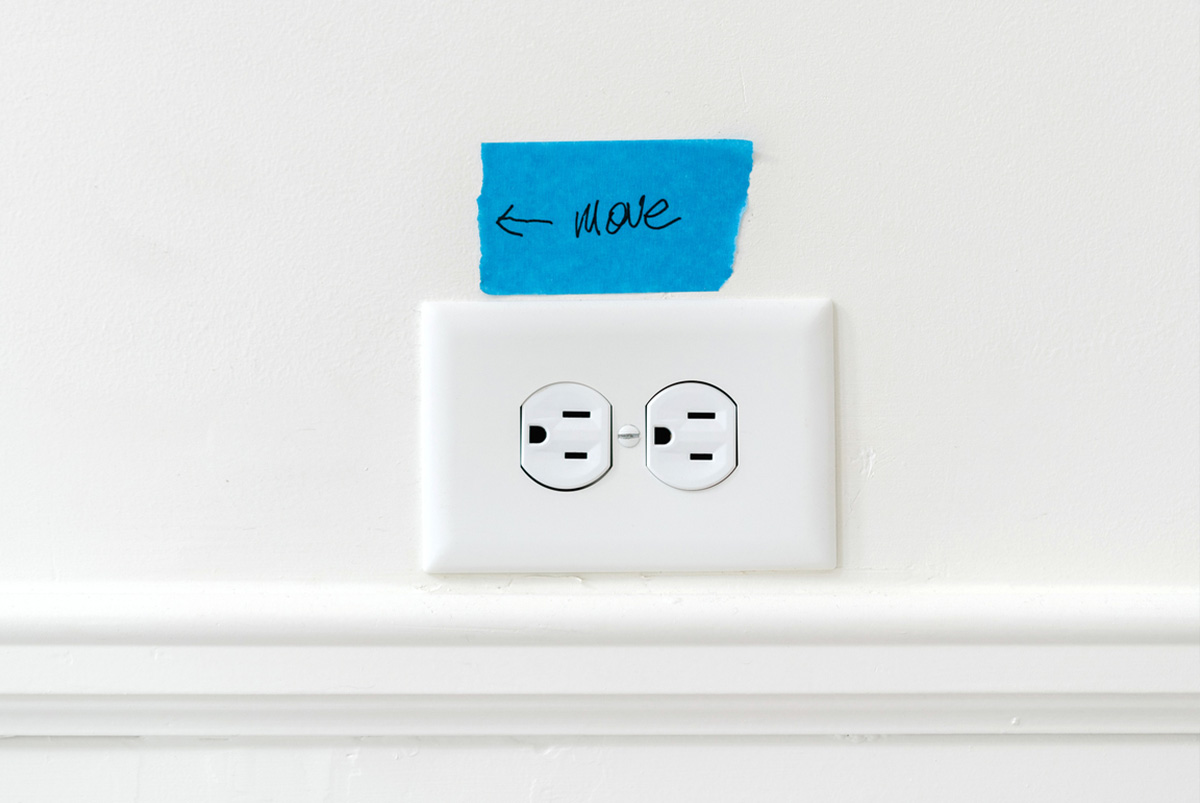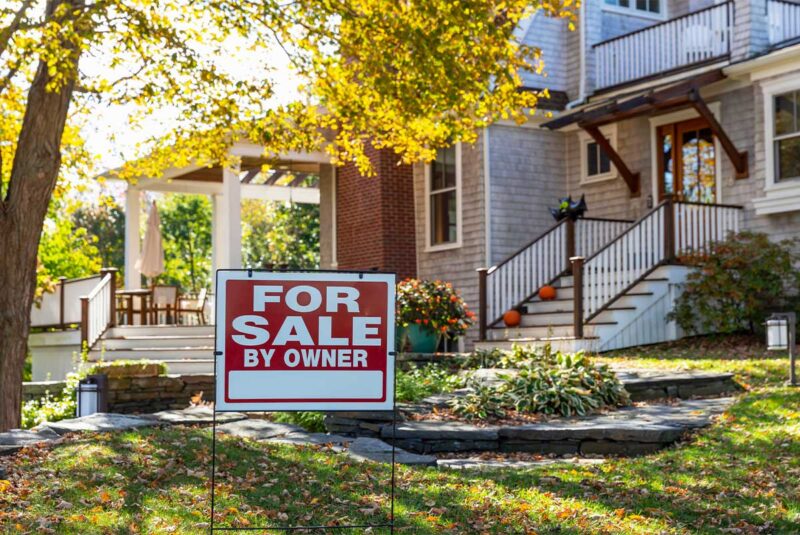Ready To Buy a Home?
Get Approved to Buy a Home
Rocket Mortgage® lets you get to house hunting sooner.
If you’re purchasing a newly constructed home, the blue tape walk-through is an integral part of the buying process.
Blue tape walk-throughs can be stressful if you go in blind. So you’ll want to have a plan of action to ensure you get everything you need from the builder of your new home by the time you’re ready to move in.
Let’s talk about what the blue tape walk-through entails, how to prepare for it and what to expect.
What Is a Blue Tape Walk-Through?
A blue tape walk-through (aka blue tape inspection) allows home buyers to identify any incomplete work, defects, or other issues on a newly constructed home before closing.
The “blue tape” in a blue tape walk-through refers to the colorful tape painters use on the job.
During the blue tape walk-through, you’ll meet with one of the builder’s representatives (like their on-site foreman or builder’s agent). Together, you’ll walk through the house and use the blue painter’s tape to mark off any areas that need to be fixed or completed.
The blue tape walk-through typically occurs around 3 – 4 weeks before the scheduled closing date. This gives the builder enough time to address and resolve any issues with the home.
Blue tape walk-throughs are similar to other walk-throughs, only you’ll take a more active role. When you see something amiss, you’ll leave a piece of blue tape there, reminding the builder to look closer.
What’s the difference between blue tape and the final walk-through?
The main difference between a blue tape walk-through and a final walk-through is that a blue tape walk-through is usually reserved exclusively for new constructions, whereas final walk-throughs apply to both new and existing homes.
Another critical difference between these types of walk-throughs is who else is present. At a blue tape walk-through, the builder will have a representative there – and you might bring your real estate agent or a family member to help you look for defects. It’ll usually just be you and your real estate agent at a final walk-through.
How long does a blue tape walk-through take?
A typical blue tape walk-through can take 1 to several hours to complete and is largely dependent on the size of the home.
Generally, larger homes warrant longer blue tape walk-throughs, simply because there’s more to inspect.
How To Prepare for a Blue Tape Walk-Through
To prepare for your blue tape walk through, you should get ready to think and act like an inspector. Make a walk-through checklist of all the items you want to examine before starting the walk-through.
Take your time and go through everything with care. It might seem exhaustive and cumbersome, but the blue tape walk-through is a chance to get any issues resolved at no cost to you. If you miss something during the blue tape walk-through, a small oversight might end up being a costly, time-consuming mistake.
What Gets Inspected During a Blue Tape Walk-through?
Every surface is inspected for quality and completeness during a blue tape walk-through. The walk-through might begin outside the house, where you’ll inspect the home’s exterior, landscaping, lighting, fences, and more. Then, you’ll go inside the home, where you’ll want to inspect everything from floors and ceilings to windows and doors.
Let’s discuss some specifics you should look for during blue tape day.
Structural integrity
A home’s structural integrity is the most critical aspect of the blue tape walk-through.
Common signs of structural defects may include cracks, drainage issues, water damage, flaking or crumbling stucco, and uneven or sloped flooring.
On the exterior, make sure gutters are correctly hung and clean (or will be before closing). If there’s a patio, deck, or balcony, check that the flooring is even and railings are safe and properly installed.
If you notice any of these issues during your blue tape walk-through, don’t hesitate to put some tape on it and let the builder’s representative know.
Appliance and utility inspection
Appliances and utilities keep your home running, so you’ll want to double-check that they’re safe and functional. Though you’re not going to examine the sewer and power lines, you should still inspect the home’s utilities and appliances.
Inspected utilities
- Water
- Electric (Electrical outlets, light switches and more)
- Gas
Inspected appliances
- Washer and dryer
- Refrigerator and freezer
- Oven
- Stove/cooktop
- Dishwasher
- HVAC systems
Cosmetic and usability issues
While safety is paramount, cosmetic and usability issues are also important considerations during your blue tape walk-through. Be on the lookout for:
- Windows, screens, doors and drawers that don’t open and close smoothly – including the garage door and any closet doors
- Scrapes, scuffs, scratches and cracks on countertops, floors, walls and windows
- Incorrectly installed appliances, cabinets, light fixtures and faucets – including loose or missing knobs or handles
- Incomplete caulking or grout around tiles and counters
- Even moldings, secure stair banisters and properly installed carpets
What Is the Outcome of a Blue Tape Walk-Through?
The outcome of a blue tape walk-through is a checklist of items the builder will have to correct before closing. Any issues you find will be documented for further inspection by the builder.
Sometimes, the builder won’t have enough time to finish all the repairs before closing. So they’ll sign an addendum to the contract promising to make those changes.
If the home is in perfect condition and you don’t request additional repairs, you can move forward with your scheduled closing.
Blue Tape Walk-Through vs. Home Inspection. What’s the Difference?
A home inspection is a professional, in-depth evaluation of a home and its systems.
Blue tape walk-throughs and home inspections are similar because they look closely at a home, its condition, and its functionality.
One of the significant differences separating the two is purpose. A home inspection is usually for knowledge purposes or renegotiating the terms of a home purchase agreement, while a blue tape walk-through is used as a list of items for the builder to address.
Licensed home inspectors conduct home inspections on behalf of home buyers, who generally schedule the inspection within a week of going under contract to purchase a home. The home inspector may do a home inspection alone, though the buyer and buyer’s agent might also be present.
In a blue tape walk-through, you (the buyer) and the builder’s representative must be there. Additional attendees can include your REALTOR® and a family member or friend.
The Blue Tape Is Your Green Light
Blue tape walk-throughs ensure buyers and home builders are on the same page – and that the home is move-in ready. The tape might be blue, but you can think of the blue tape walk-through as your green light to close.
Take the first step toward buying a home.
Get approved. See what you qualify for. Start house hunting.
The Short Version
- A blue tape walk-through (aka a blue tape inspection) allows home buyers to identify any incomplete work, defects or other issues on a newly constructed home before closing
- A typical blue tape walk-through can take 1 to several hours to complete and is mainly dependent on the size of the home
- A home’s structural integrity is the most essential aspect of the blue tape walk-through




